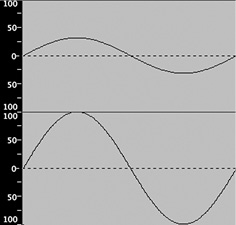| << Chapter < Page | Chapter >> Page > |
An audio compact disc is able to record sound waves that vibrate as slow as 20 times per second (20 Hertz = 20 Hz) and as fast as 20,000 times per second (20,000 Hertz = 20 kiloHertz =20 kHz). Humans are able to perceive sounds from approximately 20 Hz to 15 kHz, depending on age, gender, and noise in the environment. Many animals are able to perceive soundsmuch higher in pitch.
When musicians talk about being “in tune” and “out of tune,” they are talking about pitch, but more specifically, about the relationship of one pitch to another. In music we oftenhave a succession of pitches, which we call a melody, and also play two or more pitches at the same time, which we call harmony. In both cases, we are conscious of the mathematicaldistance between the pitches as they follow each other horizontally (melody) and vertically (harmony). The simpler the mathematical relationship between the two pitches, the moreconsonant it sounds and the easier it is to hear if the notes are in tune.
The simplest relationship of one pitch to another is called the octave. The octave is so fundamental that we give two pitches an octave apart the same letter name. The ratio between notes an octave apart is 2:1. If we have a note vibrating at 400 Hz, the pitch an octave higher vibrates at 800 Hz (2 * 400 Hz). The pitch an octave lower than 400 Hz has a frequency of 200 Hz (400 Hz / 2).
The simplest relationship of one pitch to another is called the octave. The octave is so fundamental that we give two pitches an octave apart the same letter name. The ratiobetween notes an octave apart is 2:1. If we have a note vibrating at 400 Hz, the pitch an octave higher vibrates at 800 Hz (2 * 400 Hz). The pitch an octave lower than 400 Hz has afrequency of 200 Hz (400 Hz / 2).


The simplest wave form is the sine wave, which we have seen diagrammed in the examples for frequency and amplitude above. Pure sine waves rarely occur in nature but they can easily be created through electronic means. An instrument with a timbre close to the purity of a sine wave is the flute. The violin section of the orchestra, by contrast, has a much more complex timbre as seen in its wave form below.

Notification Switch
Would you like to follow the 'Music appreciation: its language, history and culture' conversation and receive update notifications?